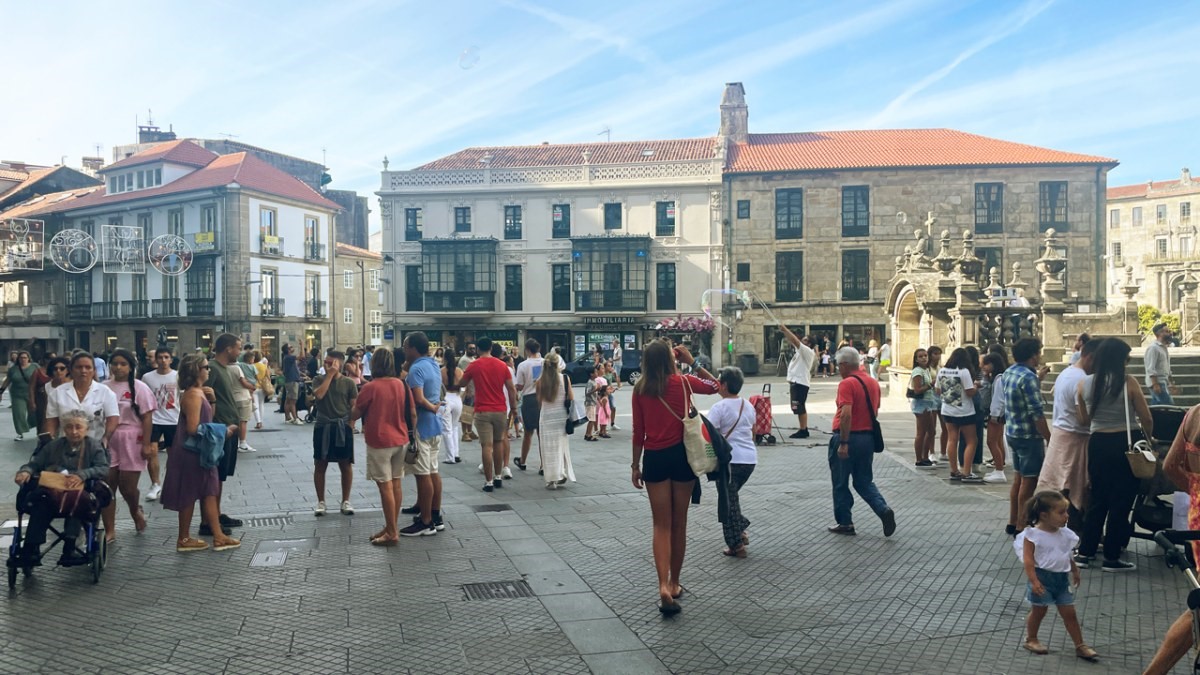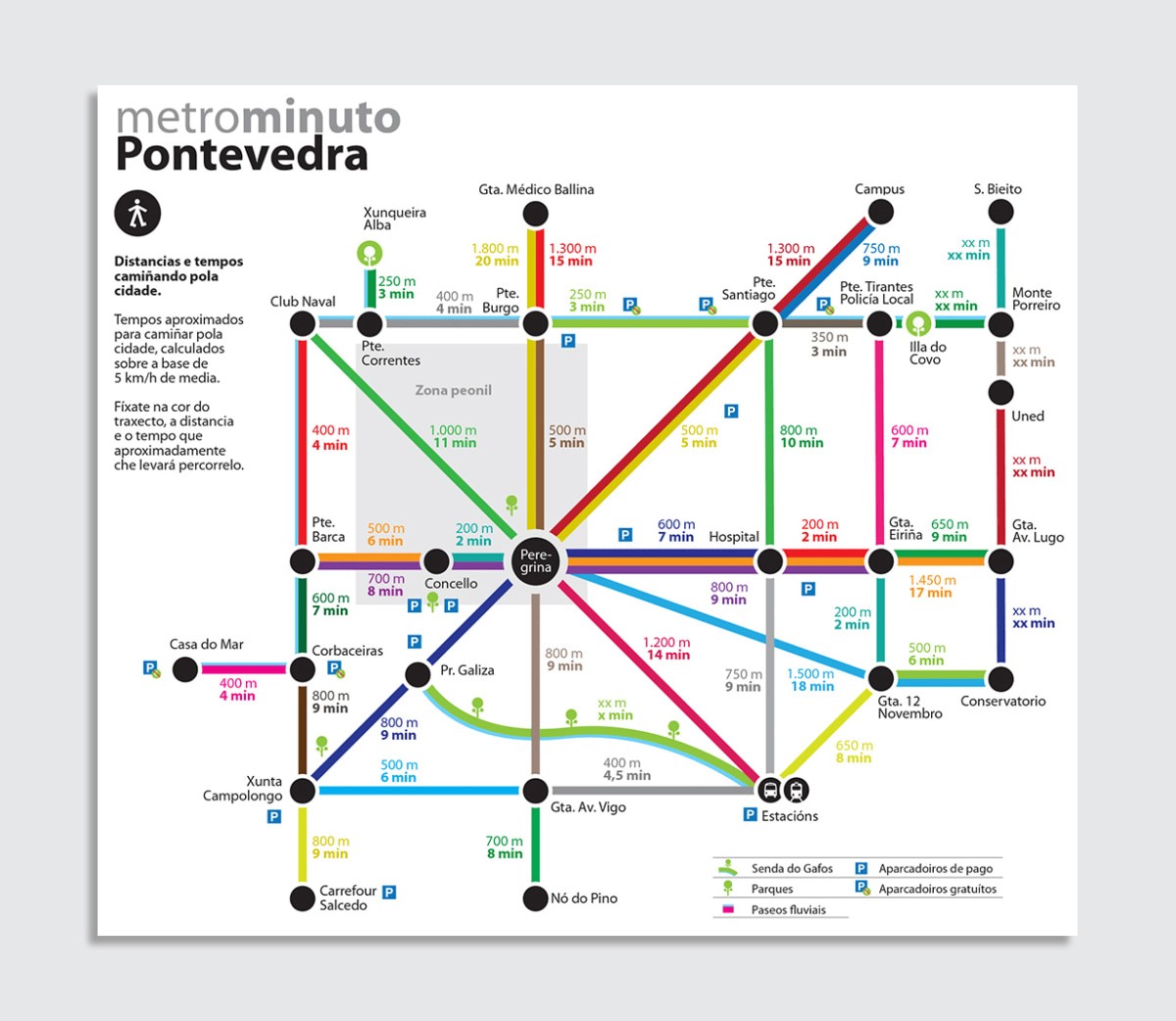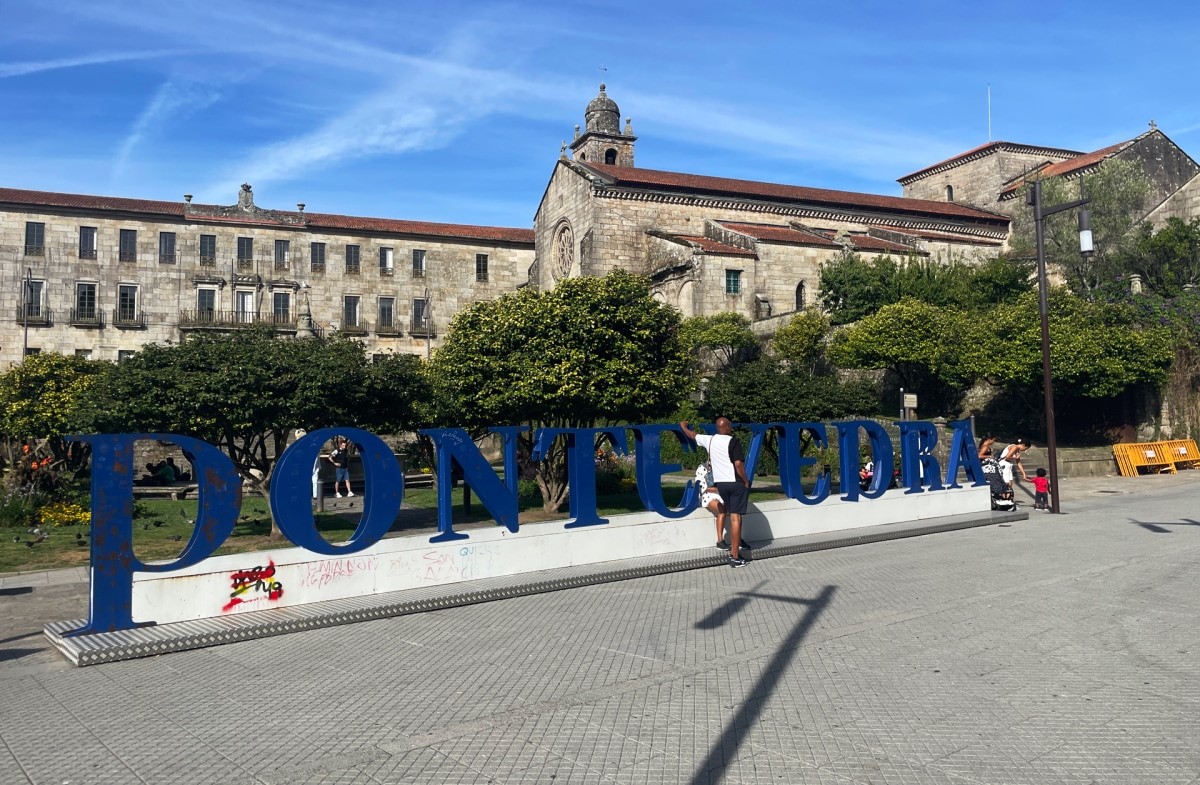By David Zipper
In 1999, Miguel Anxo Fernandez Lores became mayor of Pontevedra, a city of 84,000 in northwestern Spain. At the time, Pontevedra was grappling with a bevy of challenges including poor air quality, an exodus of young families, and a sputtering local economy. Inspired by books like Jane Jacobs’ The Death and Life of Great American Cities and the British report Traffic in Towns, Fernandez Lores believed he had a solution: Get rid of the cars that were clogging Pontevedra’s streets.
And so he did. Starting with the historic center city and steadily expanding outward, the city removed on-street parking, restricted car access, and widened sidewalks. (Notably, Pontevedra’s transformation began more than a decade before Paris Mayor Anne Hidalgo became an urbanist cause célèbre for booting automobiles from the City of Light.) Some of Pontevedra’s car owners balked, but Mayor Fernandez Lores was unmoved. “It’s not my duty as mayor to make sure you have a parking spot,” he said at a 2020 conference. “For me, it’s the same as if you bought a cow, or a refrigerator, and then asked me where you’re going to put them.”

Visiting the city last month, I encountered crowds of people of all ages ambling along quiet streets, chatting in shady plazas, and devouring seafood in the seemingly infinite array of bustling restaurants (the octopus dish pulpo gallego is a local specialty). I was equally struck by what I did not see: Cars parked curbside, traffic lights, and surface parking lots. (I also didn’t see much public transportation; because the historic center can be traversed on foot in under 30 minutes, it has only two bus lines.)
With its “Fewer cars, more city” campaign still going strong after more than two decades, Pontevedra offers some of the best evidence available about what happens when a city is reconfigured to accommodate people, rather than automobiles.
Here are five lessons that Spain’s car-free pioneer can offer local officials elsewhere who might want to follow its lead.
Lesson 1: “Car-free” doesn’t mean “no cars”
Despite its reputation, Pontevedra does allow certain motor vehicles on its streets. “We don’t talk about being a no-cars city,” Mayor Fernandez Lores told me. “We talk about being a city with only necessary, essential traffic.”
Pontevedra residents can drive to garaged parking spots, and visitors pay to park in underground lots (the city has also established several free parking lots on the urban periphery, within walking distance of the city center). Those with disabilities are free to drive in Pontevedra as long as they obtain a permit, and delivery workers can briefly leave their vehicle outside.
But make no mistake: The number of cars in Pontevedra has plummeted during the last two decades following the elimination of on-street parking, the conversion of traffic lanes into sidewalks, and the reconfiguration of streets to prevent through traffic. “If you want to drive across Pontevedra, you can—but you will waste a lot of time and realize it is impractical,” Fernandez Lopez told me. According to the city, car trips have fallen 97% since 1999 in the 4.5-square kilometer historic center and 53% across the entire city (at 46 square miles, it’s two-thirds the size of the District of Columbia).
During a conversation in his office, the mayor grabbed my arm and brought me to his window overlooking Michelena Street, thronged with pedestrians and without a motor vehicle in sight. “We used to have 14,000 cars here every day,” he told me, smiling proudly.

Lesson 2: Going car-free boosts road safety
The few cars that still roam Pontevedra’s streets are limited to 30 km/hr (19 mph), with almost 300 speed bumps preventing drivers from flooring it. Due to low vehicle speeds, collisions are far less likely to result in serious injury. According to municipal officials, the city hasn’t had a traffic death since 2011.
Because of the city’s slow and pedestrian-oriented streets, “bicycles are exposed to very minor threats,” according to a city pamphlet. The city has built very few bike lanes; instead, those cycling are expected to slow down and mingle with pedestrians.
It’s an approach that seems hard to fathom for American cities, where urban cyclists are often forced to share a traffic lane with three-ton SUVs traveling at 40 mph (not coincidentally, U.S. cyclist and pedestrian deaths are at their highest levels in decades). For cities seeking to protect so-called “vulnerable street users,” Pontevedra’s experience suggests that reducing motor vehicle speed—along with the number of motor vehicles, period—is a strategy worth considering.
Lesson 3: Going car-free can attract new residents
Before Pontevedra underwent its mobility transformation, the city’s population growth was flat. Mayor Fernandez Lores said that when he took office in 1999, the historic center was largely devoid of young families and old people—many of whom felt unsafe due to the traffic roaring by.
Now the story is very different: Pontevedra has become the fastest-growing city in the province of Galicia. “People are relocating from suburbs into the city, as well as from other parts of Spain,” Fernandez Lores told me.
Many of Pontevedra’s newcomers are young families enticed by safe streets as well as the clean air (local carbon dioxide levels have fallen by two-thirds since motor vehicle traffic was restricted). The city’s population is also the youngest in Galicia.
Worldwide, arguments for reducing automobile use typically revolve around upsides to safety, pollution, and quality of life. But Pontevedra’s experience suggests that urban revitalization could be a benefit as well. Could going car-free reinvigorate struggling American cities, particularly those in the Northeast and Midwest where many street grids predate the automobile? It’s an intriguing idea that has yet to be tested.

Lesson 4: Getting rid of cars can stimulate the local economy
Pontevedra’s historic center now pulsates with commerce, as crowds of pedestrians spend their euros in shops and cafes. Vacant storefronts are few and far between.
The situation was otherwise in the 1990s, when retail activity was drifting away from the city center and toward the suburbs. Stimulating economic growth was a key goal of the city’s mobility reboot—and it seems to have worked. In a recent economic census, Pontevedra showed higher net business growth than any other Galician city from 2016 to 2020.
“We bet on the local shops,” said Mayor Fernandez Lopes. “We wanted the entire city center to be a place where you can buy a pair of shoes or trousers at a variety of different shops.” Since taking office, he has refused to approve any new mall construction on the urban periphery, concerned that suburban retail could drain energy from the pedestrian-oriented urban core. “If you spread retail services throughout the city, people have to drive to reach them,” the mayor told me.
In North America as well as Europe, local retailers are some of the staunchest opponents of pedestrianization efforts, fretting that car restrictions would decimate their business. But studies show they consistently overestimate the share of their customers arriving by automobile. Pontevedra’s experience indicates that many local establishments can do just fine catering to those on foot.
Lesson 5: Going car-free can be a political winner
Restricting car access has become a lightning rod in European politics. In Barcelona and Berlin, newly elected city leaders have rolled back the lower speed limits and car-free streets introduced by predecessors. A few weeks ago, Britain’s Prime Minister Rishi Sunak announced his opposition to London’s low-traffic neighborhoods, declaring “I am on motorists’ side.”
But the longevity of Fernandez Lores’ tenure as mayor of Pontevedra—24 years and counting—shows that voters can reward leaders who free their city from an automotive stranglehold. Fernandez Lores told me that he is now the longest-serving large-city mayor in all of Spain. (“Not the oldest – just the longest-serving,” he said with a smirk.)
Even more remarkable, Pontevedra’s surrounding province of Galicia is a bastion of conservative Spanish politics. In the United States, blue cities like San Antonio often clash with red state officials when seeking to limit car speed or reallocate road space for those walking or biking. I asked Fernandez Lores if he encountered similar pushback from Galician leaders, to which he gave an unprintable response: “F— them,” he said, grinning.
Still, Fernandez Lores’ mobility policies have made him something of a lightning rod. In July, the far-right Vox party held a rally in Pontevedra, claiming that the city had become a “laboratory for experiments on the 2030 Agenda,” a reference to a widely debunked COVID conspiracy theory. Local residents seemed to shrug; Vox did not secure a single legislative seat in the Pontevedra region during the Spanish elections later that month.
Pontevedra’s lessons don’t apply equally to all global cities; many lack its picturesque center that was initially built for pedestrians. Restricting cars within a metropolis designed for automobiles alone—as many were in the American South and West—is more difficult and less advantageous.
But that still leaves countless towns and cities, on both sides of the Atlantic, where adopting Pontevedra’s rallying cry of “fewer cars, more city” could resonate. And remember: Pontevedra didn’t transform its streets all at once: The city began with its historic center and worked its way outward as residents warmed to Mayor Fernandez Lores’ ideas.
That may be Pontevedra’s greatest lesson of all: Once residents experience life in a car-free city, most of them seem to like it. A lot.
(33)